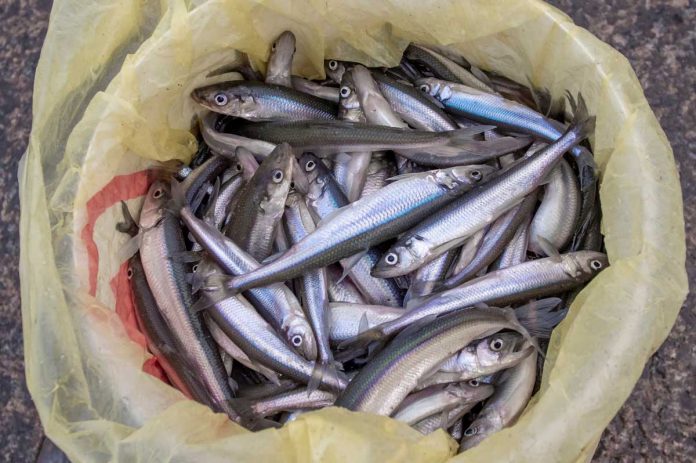Controversial oil, natural gas pipelines under Mackinac Straits
MACKINAC – The dispute between energy giant Enbridge and the State of Michigan over the submarine pipeline through the Straits of Mackinac has been sent to mediation. Former US District judge Gerald Rosen has been appointed to try and find a common ground between the two parties.
Enbridge has operated the gas and light oil transmission pipeline, 6.5 kilometres of which runs along the lakebed through the straits, for 67 years without a major incident. But environmentalists point to the potentially devastating impact a major leak would have on both Lake Superior and Lake Huron—in some simulations reaching as far as the shores of Manitoulin Island.
Gretchen Whitmer, governor of Michigan, ran for office on a platform of shutting down Line 5 and announced the withdrawal of the lakebed easement effective May 12 and has ordered Enbridge to begin the process of dismantling the dual pipeline.
For its part, Enbridge disputes that Michigan has the power to shut down the line, alleging that power lies solely with the federal government and has filed a countersuit to the state’s case.
At stake are two competing interests. On the one hand, the potentially catastrophic impact of the spill from a line that moves 540,000 barrels of petroleum products a day would devastate the economies on the Great Lakes, threatening nearly a trillion dollars of commerce on both sides of the border. On the other hand, the economic impact of shutting off those 540,000 barrels of product would hit approximately 25 percent of the crude oil produced in North America, approximately 20 percent of the natural gas consumed in the US; and impact approximately 3.7 million retail customers in Ontario and Quebec.
Former justice Rosen is currently researching precedent as to whether or not the case belongs in state court and should move to a federal venue. That hearing is the hearing scheduled for May 12.
The 645-mile Line 5 pipeline originates in Superior, Wisconsin, travelling through Michigan’s Upper and Lower peninsulas, to finally end up in Sarnia on this side of the border. Other pipelines haul product on to refineries in Quebec.
Enbridge alleges that the transportation alternatives to Line 5 would involve up to 2,000 trucks going one way per day, and/or 800 rail cars one way per day. The issue concerns Ontario and Manitoulin on both hands. While a spill would hit Ontario’s Great Lake shores, without Line 5, the province would find itself about 45 percent short of the crude oil it currently requires as, according to Enbridge Inc., the supply from Line 5 is used to produce gasoline and diesel for Ontario and 100 percent of the jet fuel used at Toronto Pearson International Airport as well as 40 to 50 percent of the crude oil that is used by Quebec refineries to make gasoline and other fuels in that province. Line 5 also provides 55 percent of Michigan’s propane needs.
Canadian Minister of Natural Resources Seamus O’Regan told MPs earlier in March that a shutdown would force Ontario and Quebec to find other sources of crude oil for refining and then import that petroleum by rail or truck or ship—which he characterizes as a potentially more dangerous and environmentally damaging method of transport.
The court case revolves around two key legal streams. One is the concept of the public trust doctrine, a foundational Roman era legal device that predates both US and Canadian legal systems which holds that governments hold certain resources (such as navigable waters) as a trust with the fiduciary duty to protect those resources for the general public; the other is based on Enbridge’s alleged disregard of the terms of its easement—failing to properly support the line from its inception and allowing the line to bend in ways that threaten its integrity, and not maintaining the pipeline’s protective coating properly.
“Enbridge has imposed on the people of Michigan an unacceptable risk of a catastrophic oil spill in the Great Lakes that could devastate our economy and way of life,” said Governor Whitmer after issuing her order. “That’s why we’re taking action now.”
Environmental lawyers suggest that the public trust doctrine provides Michigan with the upper hand in the dispute. The public trust doctrine is enshrined in Michigan constitution.
For its part, Enbridge is alleging the order violates a 2018 agreement with former Michigan Governor Rick Snyder which gave the company permission to operate until it found a replacement option to the lakebed line.
The company has installed concrete barriers, new supports and instituted policies and procedures for shipping that are aimed at preventing any anchor strikes from damaging the pipeline. The anchor strikes are a serious concern as recent reports have indicated. An Enbridge chartered vessel was reportedly significantly understaffed and human error has been blamed by the company for the latest strike. A moratorium on anchoring in the straits was also instituted.
The state has responded that agreement was predicated on Enbridge being in compliance with the terms of its easement, something for which Michigan has a fair bit of ammunition to dispute is the case. Distrust of the company due to historic activity, or lack thereof, plays a significant role in the pushback from environmentalists and state officials.
Enbridge had offered an olive branch, of sorts, to diffuse the issue in the form of the Great Lakes Tunnel Project, an approximately $500 million private investment by the company to build a replacement through a tunnel running far beneath the straits.
The 18-foot diametre tunnel would virtually eliminate the danger of a spill in the straits and was expected to be completed in 2024, with construction slated to begin in 2021. Though the tunnel design has yet to be finalized, Enbridge said it envisions constructing a tunnel with “an internal diameter range between 18 feet and 21 feet at a depth that will be no shallower than 60 feet below the lakebed where the tunnel is in soil, and may be up to 250 feet beneath the lakebed which will help protect the lakebed from any disturbance.”
On April 8, 2020, Enbridge filed for permits for the tunnel with the Michigan Department of Environment, Great Lakes and Energy (EGLE) and the US Army Corps of Engineers.
But the issue is compounded in environmental circles due to its focus on continued use of fossil fuels, which are a major contributor to global warming. Through that lens, no pipeline is a good pipeline.
The tunnel would be constructed from the south side of the Straits of Mackinac and travel north, which the company says will help minimize environmental impacts while allowing safe construction, operation and maintenance of the tunnel. Work on the south side would be confined to 25 acres owned by Enbridge and on land owned by other utilities with which Enbridge has easement agreements. Enbridge said it will maintain an approximately 115-foot buffer from the shoreline of Lake Michigan. According to studies filed by the energy company, there are no wetlands, protected species or significant cultural resources within this proposed workspace.
The tunnel boring will end on the north side of the straits, using workspace within the approximately 16 acres owned by Enbridge. To help minimize the extent of impacts on natural resources, the company says the workspace will be primarily located within uplands to avoid forested wetlands. Enbridge will maintain at least a 50-foot buffer from the shoreline of Lake Michigan. Some protected plant species will be impacted on the north side and but the company says it will work with the applicable agencies to offset these impacts.
To minimize impact, contractors will stockpile topsoil and reuse it for site restoration, while rock cuttings from the tunnel also might be used as structural fill. Cuttings not suitable for reuse will be stockpiled separately and removed from the site. All water generated as part of the boring activities will be cleaned prior to discharge.
The company anticipates that over two million work hours will be needed to complete the tunnel project. Enbridge has committed to using Michigan labour.
In every event, the chances of the dispute being resolved or the legal wrangling finished anywhere near the governor’s deadline are very remote. The case is expected to drag out for months, if not years, and whatever the final decision, the case will have far reaching implications for the legal definition of the public trust doctrine and who holds the reins of the public trust in the US, as well as the relationship between Canada and the US.
While the middle ground would seem to point to a compromise, the conflict’s eventual outcome will also point to which interests come out trumps in our legal systems—the economy or the environment.
The Expositor will be following this story closely as it makes its way forward.





